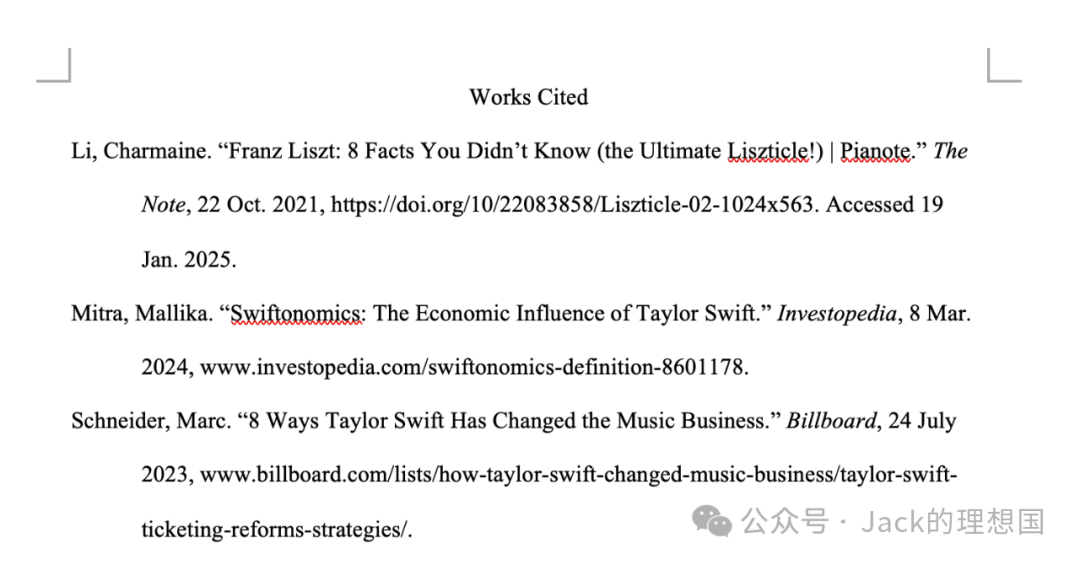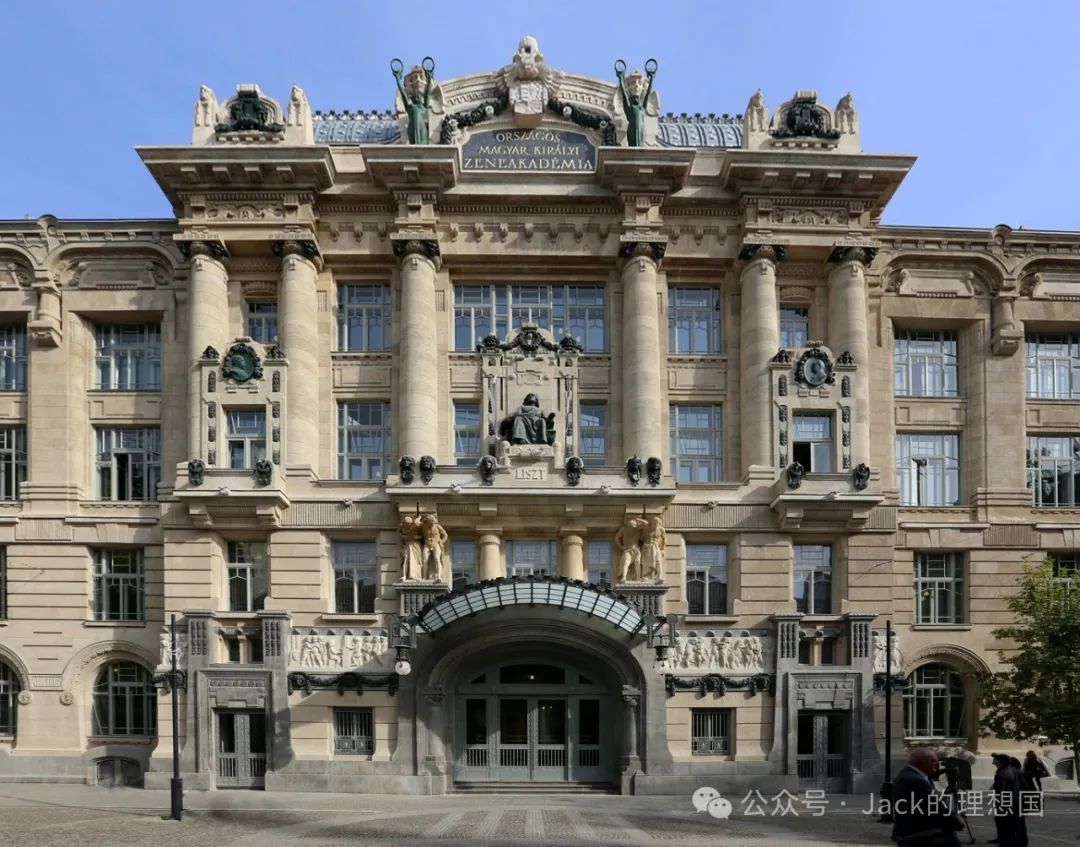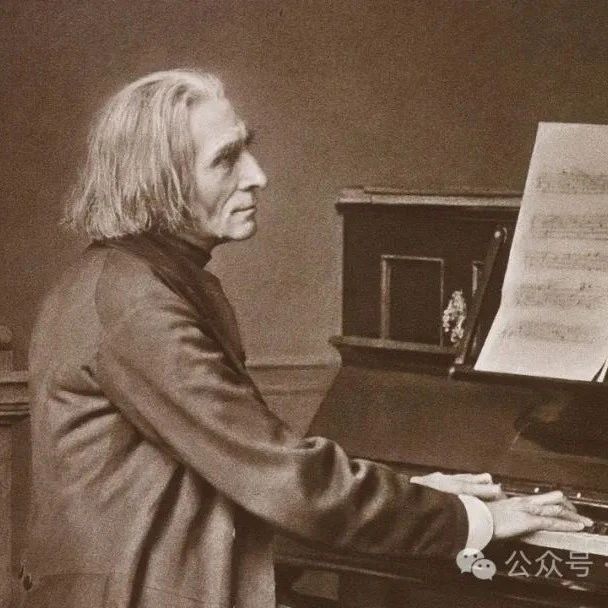History in Music 8 - On Music and Economics 历史中的音乐 8 - 音乐家的经济影响力
Introduction
Today, when people examine the impact of artists, they tend to focus exclusively on the influences artists make on music. For example, a criterion to judge the success or “quality” of an artist can be to assess whether their productions make innovations to a preexisting genre, or lead to the creation of a new genre. However, a dimension of an artist’s impact that tends to be underestimated and overlooked is the kind brought upon on an economy. This dimension is quite significant as it illustrates the role that a certain group in societies play to affect economic change, thereby shedding light on possible economic policymaking.
Since the advent of public music performances, it is no doubt that artists performing at a particular location would generate considerable macroeconomic effects. These effects have ranged from a sudden surge in tourism and spending, to more long-lasting ones that result from an artist shaping part of a city’s cultural landmark. In this article, we will examine the relationship between artists and economies by drawing a parallel (again) between two most influential artists and their worlds: the current music phenomenon Taylor Swift and the Hungarian piano maestro Franz Liszt (1811-1886). We will first analyze the nature of the multidimensional impacts of these two musicians and proceed to discuss some of the root causes allowing them to make their mark on economies today and back in the 19th century.
Taylor Swift and the Economy

Over the years, Ms. Swift has swiftly constructed a music empire that holds considerable sway. Her empire consists of multiple components that leave an impact on economies, from albums that sell millions of copies globally to concerts that generate jaw-dropping numbers of revenue. This latter category, in particular, is evolving to be a more powerful factor that influences the growth of economies worldwide.
Take into consideration the Eras Tour that Ms. Swift has recently launched. One analysis highlighted that the Tour could generate $5 billion in economic impact in the U.S. This is higher than the GDP of 50 countries. The U.S. Travel Association adds that if one factors in the “indirect spending of consumers who may not have actually attended the concerts but joined in on spending around the events,” the figure approaches to a whopping $10 billion.

Yet, the economic impact of Ms. Swift’s Tour is not by any means limited to the U.S. It has also produced similar ripple effects to local economies abroad. For example, economists expected Swift’s concert in Tokyo to generate $228 million into the Japanese economy. The economic benefits of Ms. Swift’s concerts were so lucrative that Justin Trudeau, the former Canadian prime minister, requested to Ms. Swift via X to add tour stops in Canada.
Therefore, from this selection of examples, we can see that her performances have left marked economic impacts on world economies. The Tour prompts millions of Swifties to flock to cities where they were held. The subsequent spending spree on the concert and accommodation, traveling, and merchandise shopping would account for a significant chunk of consumption that feeds into economic growth. Additionally, the “host city” is not the only stakeholder being affected here. As an example, even though Ms. Swift has not intended to pay a visit to New Zealand, Air New Zealand claimed that it would add new flights to respond to the so-called “Swift surge” in demand after the artist announced that she was headed to Australia. These secondary effects would encourage spending from the entire global pool of Swifties, and further generate ripple effects on global economies.
Franz Liszt and the Economy
Through many similar mechanisms, Liszt’s performances across European cities during the 19th century had a strong pull on local economies. Music historians use the term “Lisztomania” to describe the societal craze over this legendary pianist and composer during that period. It is admittedly quite challenging to acquire real, precise economic data regarding the impact of Liszt’s performances. Therefore, we can only make well-educated assumptions on the possible economic ripples that Liszt created.

First, Liszt’s performances would have generated a huge sum of revenue for concert halls and theaters. Venues that hosted Liszt would have profited from ticket sales, often sold at premium prices due to surging demand. By macroeconomic theory, all this income could be rechanneled into improving the venues themselves or investing in the local economy.
Additionally, Liszt’s concerts would have provided a strong boost to tourism. Many European towns and cities, at his time, such as Budapest (which only came into official existence in 1873), were not particularly sprawling metropolises that boasted vibrant and fast-growing economies. Thus, when Liszt would perform at these locations, his fame would have attracted audiences from nearby cities and towns, leading to an influx of visitors. In particular, historical records show that Liszt attracted many wealthy patrons and aristocrats from afar. These visitors at least would temporarily increase demand for inns, hotels, and carriage services, helping to stimulate local economic growth.
Finally, towns and cities close by Liszt’s concert venues might have also benefitted from spillover effects. During that time, when flight or train travel were not invented or widespread, traveling relied heavily on horse carriage or other means on the road. Accordingly, it is reasonable to infer that travelers passing through nearby towns and cities in the proximity of the host city would spend on food, lodging, and transportation. Such kinds of spending would have played at least a partially important role in pushing economic growth in these areas.
Drawing together Ms. Swift and Liszt, we can understand that the economic impacts of these two artists extend far beyond any one place or one group. Instead, their performances, in particular, generate ripple effects that affect a multitude of cities and economic stakeholders.
Why and How?
Now that we’ve established the economic impacts of Ms. Swift and Liszt, we can pivot to briefly investigate the reasons that may explain their explosive powers.
From the perspective of the artist themselves, it is undeniable that their ability to wield a much-amplified economic influence stems from their talent to make innovations to music composition or performance. To create significant economic impact requires the artist to be extremely influential on a global scale, and for that to be achieved, the artist must differentiate themselves from other artists. This need for differentiation calls for artists to make changes to a music style, genre, or way of performance. In the case of both Ms. Swift and Liszt, they could be considered, under a certain critical lens, as musicians who abide by this innovation philosophy.
For Ms. Swift, she has experimented with various ingenious and novel ways to interact with the audience. Previously, many artists tended to wall themselves off from fans, preferring to remain enigmatic over approachable. Unlike artists in the old days, using social media platforms, Ms. Swift has conducted vast social marketing projects and utilized these platforms as channels to allow her to directly communicate with her fans. For instance, she has written and sent personalized gifts and letters to the Swiftie community via platforms like X or Instagram. In the past, she even invited fans into her house for baking and dancing. These acts define a key difference between Ms. Swift and many artists who came before her. Namely, she chooses to create intimacy with her Swifties. This choice allows her to garner many more die-hard fans who cannot wait to see their loving idol once, even across great distances. Thereby, by innovating the relationship between artist and the fandom, Ms. Swift meets the prerequisites for achieving greater economic impact when she performs.
Similarly, for Liszt, he made significant changes and innovations to the performance style during his time, which catapulted him to the pinnacle of influential success, bestowing upon him the power to effectually alter the patterns of the local economies where he performed. For one, Liszt brought into existence the idea of a solo piano “recital” that would face the masses, not the aristocrats. To implement this change, he not only performed frequently in public venues, but also changed the positioning of the piano on stage so that he could more directly face his audience. He would even, crazily, perform on multiple pianos in a concert. By introducing Romantic classical music with a flashy and often flamboyant showmanship, Liszt quickly separated himself from other contemporary artists as the lone “star of the show.” He gained a massive pool of faithful followers who would flock from long distances afar to be mesmerized by his performance. To garner even more support, Liszt brought forth the notion of a “charity concert.” For instance, to help fund relief efforts for a Danube flood, Liszt performed multiple times to the public. These innovations to classical music performance gave him massive sway over the populace. Any one of his moves, hence, could trigger the masses to react in a frenzy, delivering significant ramifications on a local economy.
Moreover, one can attribute the economic influence of these two artists to their abilities to craft and link related industries to their performances. In other words, when they perform, they not only create economic impact solely from their performance, but also begin a chain reaction in the “subsidiary industries” that deliver a further secondary economic impact. In the case of Ms. Swift, her performances are hooked up to streaming services, album sale, merchandise sale, filmography, and even tourism or city pop culture. This intertwined relationship means that when Ms. Swift announces a performance, viewership of her streaming services will surge and merchandise sale will boom. People flock to the cinemas to rewatch the “Eras Tour Film,” and pay a weeklong visit to the host city. Even if Ms. Swift chooses not to perform a single live concert, these subsidiary industries will still flourish – Swifties will nonetheless watch hours of stream and buy the newest album and merch. This music empire immensely magnifies Ms. Swift’s potential economic influence, as a change in one factor in this empire will lead to a subsequent series of reactions in other factors, inducing secondary consumption from millions of Swifties.
Comparably, in the case of Liszt, he also constructed many related “industries” that formed parts of a massive music empire. An immediate side beneficiary of Liszt’s performances would be the music salons. Especially in his early career, Liszt could be seen in different salons to launch his career. Even as Liszt gradually transitioned to public performances, people would still gather in salons when he arrived at a city to perform to discuss him. By achieving fame via public performance, Liszt indirectly created a secondary boosting factor to the local economy by making salons a more popular and desirable place to gather to discuss him, or even more fortunately, to watch him play.
In the Long Term: Shaping the Culture of Cities

(The Liszt Music Academy in Budapest)
Ultimately, the ability of an artist to leave a lasting economic impact depends on whether their music and personality can be remembered, engraved in the pulse of the places where they have performed. While it is slightly too early to conclude that Ms. Swift will definitely shape parts of the cultures of cities that have hosted her, it is certainly true that Liszt became a monumental figure who continues to impact the local economies of cities where he performed in. For example, Liszt’s legacies can be best seen in the city where he rose to fame: Budapest. Budapest still receives tourism and other kinds of attention due to Liszt. People visit the places he once resided in, the squares and gardens named after him, and young musicians attend music schools that bear his name. The intricate relations between Liszt and the local economies that he once made an impact on have lasted to today.

导言
如今,人们在研究音乐家的影响力时,往往只关注音乐家对音乐的影响。例如,评判一位音乐家成功与否或 “质量”高低的标准,可以是看他的作品是否对已有的音乐类型进行了创新,或者是否促成了一种新音乐类型的诞生。然而,音乐家影响的另一个层面往往被低估和忽视,那就是对经济的影响。这个层面相当重要,因为它说明了社会中某一群体在影响经济变化方面所发挥的作用,从而为可能的经济政策制定提供了启示。
自公共音乐演出出现以来,音乐家在特定地点的表演无疑会产生相当大的宏观经济效应。这些影响既包括旅游业和消费的突然激增,也包括音乐家塑造城市文化地标的一部分后所带来的持久影响。在本文中,我们将(再次)以两位最有影响力的音乐家及他们的音乐世界为例,探讨音乐家与经济之间的关系:当前的音乐现象泰勒-斯威夫特(Taylor Swift)和匈牙利钢琴大师弗朗茨-李斯特(Franz Liszt,1811-1886 年)。我们将首先分析这两位音乐家多层面影响的本质,然后讨论他们在当今和19 世纪对经济产生影响的一些根本原因。
泰勒-斯威夫特与经济

多年来,斯威夫特女士迅速构建了一个具有相当影响力的音乐帝国。从全球销量数百万张的专辑到收入惊人的演唱会,她的音乐帝国由多个对经济产生影响的部分组成。尤其是后者,正逐渐成为影响全球经济增长的更强大因素。
以斯威夫特女士最近推出的 “时代巡回演唱会 ”为例。一项分析强调,该巡演可为美国带来50 亿美元的经济影响,高于 50 个国家的GDP。美国旅游协会(U.S. Travel Association)补充说,如果将“那些可能没有实际参加演唱会但参与了活动周边消费的消费者的间接消费”计算在内,这一数字将接近100 亿美元。
然而,斯威夫特巡回演唱会对经济的影响绝不仅限于美国。例如,经济学家预计斯威夫特在东京的演唱会将为日本经济带来2.28 亿美元的收入。斯威夫特女士演唱会的经济效益如此丰厚,以至于加拿大前总理贾斯汀-特鲁多(Justin Trudeau)通过 X 请求斯威夫特女士在加拿大增加巡演站。

因此,从这些例子中我们可以看出,她的演出给世界经济带来了显著的经济影响。巡回演唱会促使数百万霉粉涌入举办城市。随后在演唱会、住宿、旅行和商品购物上的疯狂消费将占到总消费的很大一部分,从而拉动经济增长。此外,“主办城市”并不是唯一受到影响的利益相关者。例如,尽管斯威夫特女士并不打算访问新西兰,但新西兰航空公司声称,在她宣布将前往澳大利亚之后,该公司将增加新的航班,以应对所谓的“斯威夫特需求激增效应”。这些次级效应将鼓励全球所有霉粉消费,并进一步对全球经济产生连锁反应。
李斯特与经济
通过许多类似的机制,李斯特在 19 世纪欧洲城市的演出对当地经济产生了强大的拉动作用。音乐史学家用“李斯特狂热症”来形容当时社会对这位传奇钢琴家和作曲家的狂热。诚然,要获得有关李斯特演奏影响的真实、精确的经济数据是相当具有挑战性的。因此,我们只能对李斯特可能造成的经济影响做出合理的假设。

首先,李斯特的演出会给音乐厅和剧院带来巨额收入。主办李斯特演出的场所会从门票销售中获利,由于需求激增,门票往往以高价出售。根据宏观经济理论,所有这些收入都可以转用于改善场馆本身或投资当地经济。
此外,李斯特的音乐会也会极大地促进旅游业的发展。在李斯特的时代,许多欧洲城镇,如布达佩斯(1873 年才正式成立),都不是特别庞大的大都市,经济发展也不够活跃和迅速。因此,当李斯特在这些地方演出时,他的名声会吸引附近城镇的观众,导致游客大量涌入。特别是,历史记录显示,李斯特吸引了许多远道而来的富翁与贵族。这些游客至少会暂时增加对旅馆、酒店、马车服务的需求,有助于刺激当地的经济增长。
最后,李斯特音乐会举办地附近的城镇也可能从溢出效应中受益。当时,飞机或火车尚未发明或普及,人们出行主要依靠马车或其他道路交通工具。因此,我们有理由推断,途经主办城市附近城镇的旅行者会在餐饮、住宿和交通方面进行消费。这些消费至少对推动这些地区的经济增长起到了部分重要作用。
将斯威夫特女士和李斯特联系在一起,我们可以理解,这两位音乐家的经济影响远远超出了任何一个地方或一个群体。相反,他们的演出尤其产生了涟漪效应,影响了众多城市与经济利益相关者。
影响力从何而来?
既然我们已经确定了斯威夫特女士和李斯特的经济影响力,那么我们就可以转而简要探究一下他们产生爆炸性影响的原因。
从音乐家自身的角度来看,不可否认的是,他们之所以能够产生巨大的经济影响,源于他们在音乐创作或表演方面的创新才华。要创造巨大的经济效应,音乐家就必须在全球范围内具有极大的影响力,而要做到这一点,音乐家就必须使自己与其他音乐家区别开来。这种差异化的需求要求音乐家对音乐风格、流派或表演方式做出改变。从某种批判的角度来看,斯威夫特女士和李斯特都可以被视为恪守这种创新理念的音乐家。
就斯威夫特女士而言,她尝试了各种巧妙而新颖的方式与观众互动。以前,许多音乐家往往将自己与歌迷隔绝开来,宁可保持神秘感也不愿平易近人。与过去的音乐家不同,斯威夫特女士利用社交媒体平台开展了大量的社会营销项目,并将这些平台作为她与粉丝直接交流的渠道。例如,她通过X 或 Instagram 等平台向 Swiftie 社区发送个性化礼物和信件。过去,她甚至邀请粉丝们到她家烘焙、跳舞。这些行为决定了斯威夫特女士与许多前辈音乐家的主要区别。也就是说,她选择与她的粉丝们建立亲密关系。这一选择让她赢得了更多的铁杆粉丝,即使相隔遥远,他们也会迫不及待地想见到自己心目中的偶像一次。因此,通过创新音乐家与粉丝之间的关系,斯威夫特女士在演出时满足了获得更大经济效益的先决条件。
同样,对于李斯特来说,他在自己的时代对表演风格进行了重大变革和创新,这使他一举登上了有影响力的成功顶峰,并赋予了他有效改变演出地当地经济模式的力量。首先,李斯特提出了面向大众而非贵族的钢琴独奏会的理念。为了实现这一变革,他不仅经常在公共场合演出,还改变了钢琴在舞台上的位置,以便更直接地面对听众。他甚至疯狂地在一场音乐会上用多架钢琴演奏。李斯特以华丽的表演方式引入浪漫主义古典音乐,很快将自己与其他当代音乐家区分开来,成为独一无二的“表演之星”。他赢得了一大批忠实的追随者,他们从很远的地方蜂拥而至,被他的表演深深吸引。为了赢得更多支持,李斯特提出了“慈善音乐会”的概念。例如,为了资助多瑙河洪灾的救援工作,李斯特多次进行公演。这些对古典音乐表演的创新使他对民众产生了巨大的影响力。因此,他的任何一个举动都可能引发群众的狂热反应,对当地经济产生重大影响。
此外,我们还可以将这两位音乐家的经济影响力归功于他们创造产业组的能力,将相关产业与他们的表演联系起来的能力。换句话说,当他们演出时,他们不仅仅通过自己的表演创造经济影响,而且还在“附属产业”中引发连锁反应,带来进一步的次级经济影响。就斯威夫特女士而言,她的演出与流媒体服务、专辑销售、商品销售、电影制作,甚至旅游或城市流行文化都有关联。这种相互交织的关系意味着,当斯威夫特女士宣布演出时,其流媒体服务的收视率会激增,商品销售也会火爆,人们会涌向电影院重看之前推出的大电影,并对主办城市进行为期可能持续一周或更久的访问。即使斯威夫特女士不举办任何一场现场演唱会,这些附属产业依然会蓬勃发展—霉粉依然会观看数小时的流媒体,购买最新专辑和商品。这个音乐帝国极大地放大了斯威夫特女士的潜在经济影响力,因为这个帝国中一个因素的变化会引起其他因素的一系列反应,诱发数百万霉粉的二次消费。
同样,李斯特也建立了许多相关的 “产业”,这些产业构成了一个庞大的音乐帝国。李斯特演出的直接受益者是音乐沙龙。特别是在李斯特早期的职业生涯中,人们可以在不同的沙龙中看到他的身影,从而这样开启他的职业生涯。即使李斯特逐渐过渡到公开演出,当他到达一个城市演出时,人们仍然会聚集在沙龙里讨论他。李斯特通过公开演出一举成名,间接地为当地经济创造了一个次级刺激因素,使沙龙成为一个更受欢迎、更令人向往的地方,人们聚集在沙龙里议论,或者更幸运的是,聚集在沙龙观看他的演奏。
从长远来看:塑造城市文化

(布达佩斯李斯特音乐学院)
归根结底,一个音乐家能否给经济留下持久的影响,取决于他们的音乐和人格能否被人们记住,能否铭刻在他们演出过的地方的脉搏中。虽然现在就断定斯威夫特女士一定会塑造曾经接待过她的城市的部分文化还为时过早,但李斯特毫无疑问成为一个不朽的人物,并继续影响着他演出过的城市的地方经济。例如,李斯特的遗产在他成名的城市布达佩斯就体现得淋漓尽致。布达佩斯至今仍因李斯特而受到旅游业和其他方面的关注。人们参观他曾经居住过的地方、以他的名字命名的广场和花园,年轻的音乐家们在以他的名字命名的音乐学校学习。李斯特与他曾经影响过的当地经济之间错综复杂的关系一直延续至今。
- 本文标签: 原创
- 本文链接: http://www.jack-utopia.cn//article/651
- 版权声明: 本文由Jack原创发布,转载请遵循《署名-非商业性使用-相同方式共享 4.0 国际 (CC BY-NC-SA 4.0)》许可协议授权










